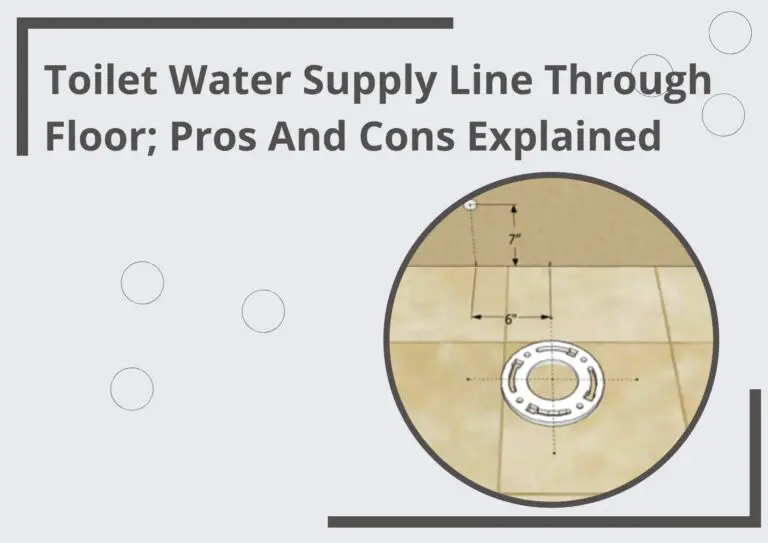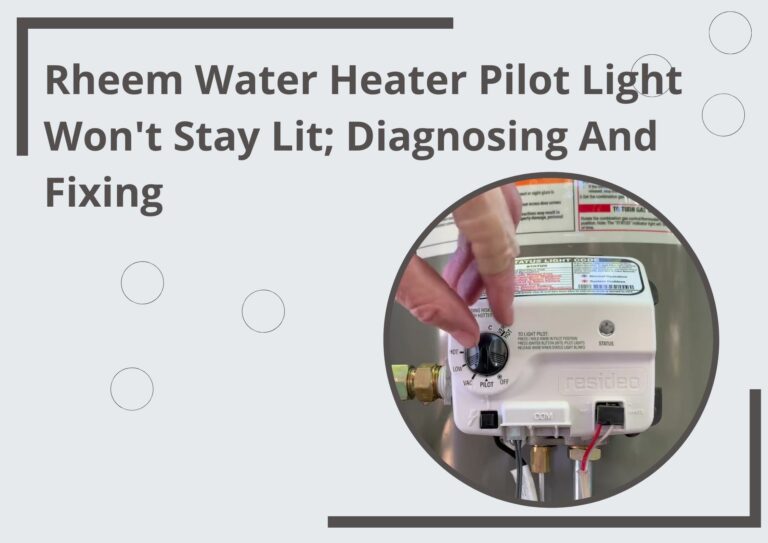Why Your Faucet Turned Off, But Water Still Runs?
I know it is something to hardly worry about when the faucet is leaking water continuously, and that is why I thought of writing about this, helping you fix the problem ASAP, on your own.
In this article, I’ll explore why this issue occurs and provide detailed explanations and solutions to help you effectively resolve this plumbing anomaly.
Table of Contents
What causes a faucet to get damaged faster?

A faucet can get damaged quickly due to hard water, which has high mineral content like calcium and magnesium. These minerals can accumulate inside the faucet, leading to limescale buildup that clogs and corrodes internal components, such as valves and washers. Over time, this buildup can impair the faucet’s functionality and cause leaks.
Additionally, excessive use can wear out a faucet’s parts faster, especially in high-traffic areas like kitchen sinks. Frequent operation can strain gaskets and O-rings, leading to drips and leaks. Also, harsh cleaning chemicals can cause the faucet’s finish to corrode and weaken its structural integrity, contributing to faster damage.
How To Remove a PEX Crimp Ring Without a Specialized Tool: A DIY Guide
plumbinsight.com
What Causes a Faucet to Keep Running After Being Turned Off?

When your faucet doesn’t shut off properly, several potential causes exist behind this persistent water flow.
1. Worn Out Washer
- Rubber Washer Wear: The rubber washer inside the faucet can wear out over time, causing water to leak or drip continuously.
This is the most common issue I’ve experienced when checking for this problem as a plumber. You need to know that these cases are simple to solve and nothing to worry about.
2. Faulty Valve Seat
- Valve Seat Corrosion: The valve seat, which connects the faucet and the spout, can corrode. This corrosion prevents the faucet from completely shutting off the water flow.
The best option is to replace the valve seat with a new one. But as a temporary fix (if you have the necessary tools only), you can try cleaning the valve seat to remove rust and set it back to check whether you’ve found a solution.
Niagara Stealth Toilet Not Flushing; What Should You Do?
plumbinsight.com
3. Improper Washer Installation
- Installation Issues: Sometimes, if a washer is not installed correctly, it can lead to a leaky faucet.
This happens when you install your plumbing system for the first time. But you might ask, if installation problems were there, why did I not experience a leak earlier? That is because, when the washers are new, they can stop leaks where the installation is not good enough.
But when the installation is not good, tiny damage to the washer can lead to leaking water while the faucet is closed, and that is why it takes time for you to experience leaks.
How do you diagnose and fix the exact problem?
Identifying the specific cause is crucial for applying the right solution.
1. Inspecting the Faucet
- Visual Inspection: Check for any obvious signs of wear or damage. Look at the washer and valve seat condition.
2. Listening for Drips
- Auditory Clues: A constant dripping sound can indicate a worn-out washer or an issue with the valve seat.
Step-by-Step Guide to Fixing a Running Faucet
Once you have a good idea of the cause, follow these steps to fix the faucet:
1. Turning Off the Water Supply
- Safety First: Before starting any repair, turn off the water supply to the faucet to prevent water spillage.
2. Disassembling the Faucet
- Remove Handle and valve. Use appropriate tools to disassemble the faucet carefully. Remove the handle and the valve.
3. Replacing the Washer or Repairing the Valve Seat
- Replace Washer: If the washer is worn out, replace it with a new one that matches the size and shape.
- Repair Valve Seat: If the valve seat is corroded, it might need to be cleaned or replaced.
How much will it cost to replace or repair the faucet?

The cost of replacing or repairing a faucet can vary based on several factors, including the type of faucet, the extent of the damage, and whether you opt for professional installation or attempt a DIY fix. Here’s a breakdown:
DIY Repair Costs
- If the issue is minor and you have some plumbing skills, you might be able to handle the repair yourself. The cost would mainly involve purchasing replacement parts, such as washers, cartridges, or valves. These parts typically range from a few dollars to around $20, depending on the type and brand.
Professional Repair Costs
- Hiring a professional plumber for faucet repair will incur additional labour costs. Plumbers often charge hourly, and the total cost will depend on the job’s complexity. Professional repair costs can range from $100 to $300 or more, including parts and labor.
Faucet Replacement Costs:
- If the faucet is beyond repair or you’re looking to upgrade, the cost of a new faucet will vary widely. Basic faucets can start at around $20 to $50, while high-end or speciality faucets can cost several hundred dollars. Installation by a professional will add to the overall cost, ranging from $100 to $300 or more.
Obtaining quotes from local plumbers for a more accurate estimate based on your specific situation is advisable. Remember that investing in a quality faucet and professional installation can contribute to long-term durability and reliability, potentially saving you money in the long run.
Conclusion
A faucet that continues to run after being turned off usually indicates an issue with the internal components, such as the washer or valve seat. Understanding the causes and following a systematic approach to diagnosing and fixing the problem can effectively stop the unwanted water flow.
Regular maintenance and timely repairs are key to preventing such issues. However, don’t hesitate to seek professional help to ensure your plumbing remains in optimal condition.
Some related FAQs
How do I know if my faucet is closed?
To check if your faucet is closed, turn the handle or lever clockwise until you feel resistance. Ensure there’s no water flowing, and listen for the sound of water stopping. Visually inspect the faucet, confirming no drips. For added assurance, place a container under it to catch any potential residual drops after closure.
Can a faucet turn on and off by itself?
Faucets typically don’t turn on or off by themselves. However, sensor-activated or touch-sensitive faucets can seemingly activate without physical touch due to sensor malfunctions or low batteries. If experiencing unexpected behavior, check the sensor, replace batteries, or consult the manufacturer’s guidelines for troubleshooting.
Why does the tap runs for a few seconds after turning off?
A tap running briefly after turning it off may be due to residual water in the pipes or faucet. This lingering water flows out after closure, causing a short delay. It’s a common occurrence and usually not a cause for concern. Ensuring proper maintenance, like cleaning aerators, can minimize such delays.
How long does it take for water to stop after turning off main valve?
After turning off the main water valve, the time it takes for water to stop flowing depends on factors like plumbing system design, pipe length, and water pressure.
Typically, it should halt within a few seconds to a minute. Older systems or those with issues might experience a slightly longer delay.
How to turn off a faucet that keeps running?
To turn off a persistently running faucet, start by firmly turning the handle clockwise until you feel resistance. If this doesn’t work, shut off the water supply beneath the sink or at the main valve. If issues persist, consider consulting a plumber to address any internal faucet malfunctions or repairs needed.




